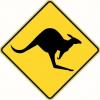Being some what new to the flat work world, in getting the sharpening set ups that I wanted, I opted for diamond lapping plates rather than the traditional water stones. I guess the main reasons were that the diamond stones take no maintenance other than washing them off, and they don't make any mess. Did I miss anything? I do have a 30+ year old set of DMT stones that I got when I first set up my shop, and they had pretty much stopped working, but put on some Trend lapping fluid and they came back to life. I would expect the diamond to outlive me, and they will never need flattening. They now have lapping plates up to 8000 grit. Am I missing anything? I do have one water stone, but haven't even gotten it wet yet.
robo hippy




 Reply With Quote
Reply With Quote







